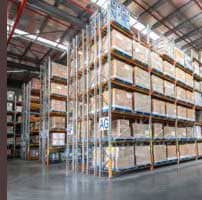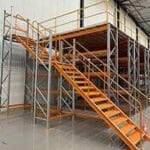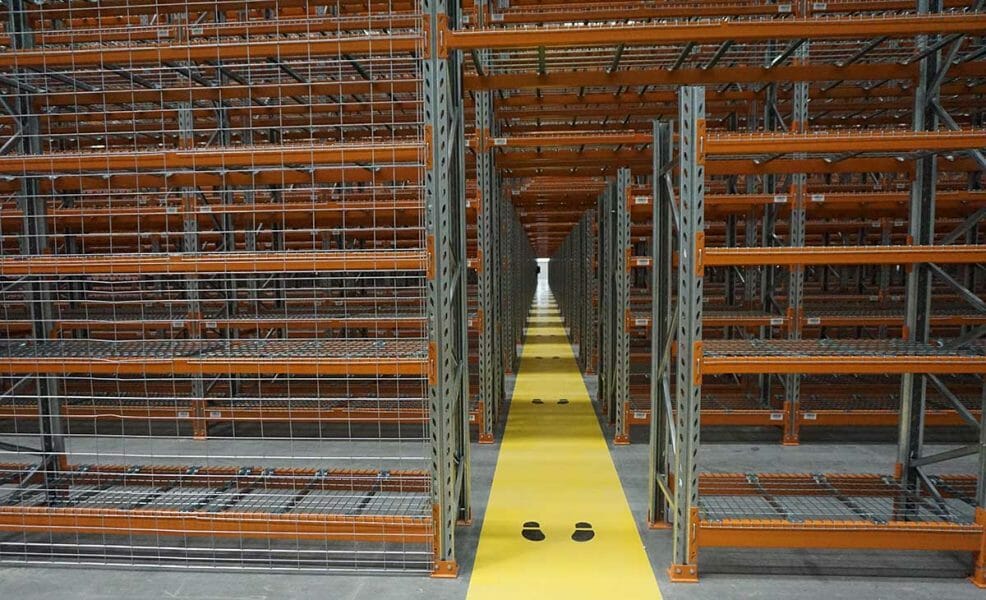Table of contents
Pallet racking systems are essential to efficient warehouse operations; however, they also present various safety hazards that can lead to severe injuries or costly accidents if not properly managed. This article outlines common pallet-racking hazards and provides practical measures to mitigate them, drawing on real-world examples, risk assessments, and work method statements.
Understanding the Hazards?
Pallet racking systems can pose several risks if not correctly maintained or operated. Employers have a duty of care to provide a safe working environment by ensuring pallet racking systems are safe, compliant, and regularly assessed for risks.
Common Pallet Racking Hazards
Forklift Impacts:
Forklifts are vital for moving pallets but can cause damage when they collide with racking. Damage to uprights, especially in areas obscured from view, can weaken the structure and lead to collapse.
Overloading racking:
Every racking system has load limits designed for safety, and overloading shelves or beams beyond these limits can cause the system to fail.
Improper rack Installation:
Incorrectly assembled pallet racking—such as improper bracing or unsecured connections—compromises the structural integrity and increases the risk of accidents.
Inadequate Maintenance:
Regular racking inspections are critical for identifying wear and tear. Neglecting maintenance allows components to degrade, heightening the risk of failure.
Falling Objects:
Product stored on high shelves can become dislodged and pose a serious risk to anyone below.
Lack of Training:
Untrained operators of material-handling equipment are more likely to cause accidents. Proper training is essential for reducing risks.
Risk Assessments: The First Step in Safety
Risk assessments are crucial for identifying and mitigating potential hazards associated with pallet racking. Here’s how a thorough risk assessment process works:
- Identify Hazards:
Review the installation site for potential hazards, considering factors like forklift traffic, environmental conditions, and load types. - Assess Risk Severity:
Evaluate the likelihood of each hazard occurring and the potential consequences. For instance, consider the probability of a forklift impact in high-traffic areas and the potential damage or injury that could result. - Implement Control Measures:
Based on risk assessments, develop control measures to minimise or eliminate hazards. This can include safety protocols, personal protective equipment (PPE), and layout adjustments to reduce risks.
Developing Work Method Statements
A work method statement outlines safe procedures for tasks related to pallet racking. These documents should incorporate risk assessment findings and detail clear safety measures, such as:
- Assembly and Erection: Provide detailed instructions for the proper assembly of racking, emphasising correct material handling, tool usage, and secure connections.
- Loading and Unloading: Establish procedures for safe pallet handling, including weight limits and stacking protocols to maintain stability.
- Inspection and Maintenance: Outline inspection schedules and key signs to look for when assessing wear or damage to components.
- Emergency Procedures: Clearly define steps for managing emergencies, such as racking collapses or forklift accidents, including evacuation and first aid protocols.
Mitigating Pallet Racking Hazards
- Install Rack Protection: Add physical barriers, such as upright protectors or end-of-aisle guards, to absorb impacts and prevent damage to the racking structure.
- Use Clear Load Signage: Ensure all load limits are clearly marked on the racking system, with regular checks to ensure the signage remains accurate and visible.
- Traffic Management: Separate pedestrian pathways from forklift operating zones using clear signage and barriers to reduce the risk of collisions.
- Train Operators: Provide comprehensive training programs for forklift operators, focusing on safe operation, load handling, and emergency procedures.
- Conduct Regular Inspections: Follow the guidelines in AS 4084:2023, which recommend inspecting racking systems at least annually. Inspections should cover all components, checking for signs of wear or damage.
- Maintain Inventory Control: Implement a robust inventory system to track pallet locations and weights, preventing overloading of racking systems.
- Select the Right Racking System: Choose a racking system that fits your warehouse’s specific operational needs, such as storage density, product characteristics, and turnover rates.
Conclusion on how to mitigate the Common Pallet Racking Hazards
A safe warehouse is not just a regulatory requirement—it’s an essential aspect of operational efficiency. By identifying hazards and implementing thorough risk assessments, work method statements, and regular maintenance, businesses can reduce accidents and injuries associated with pallet racking. Proactive safety measures protect employees and prevent costly accidents, ultimately contributing to long-term operational success.
Next Steps
- Learn More: Read our article on The Traffic Light System to identify Racking Repairs, Improving Warehouse Safety with Rack Protection or How to choose the right warehouse racking
- Get a Quote: for Sydney pallet racking or learn how to Order pallet racking.
- Reach Out: For more information or assistance, contact Total Racking Systems.





